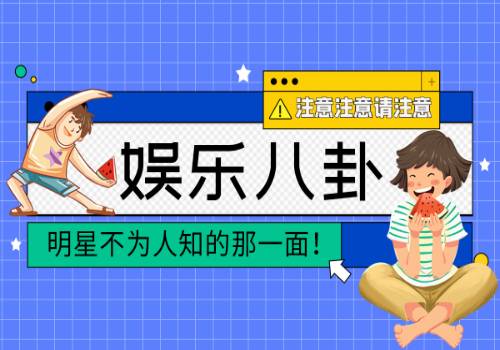2022年8月定稿的EU GMP附录1对全球无菌行业影响持续发酵。虽然中国药政部门对中国2010版GMP的附录1-无菌药品修订的工作还没有公开消息,但是毫无疑问,这部重要的国际法规对于中国无菌行业的影响还是在不断扩大。
EU GMP附录1对影响无菌药品质量属性的关键要素如何监控、监控频率有哪些新的变化,也是行业关注的要点之一。笔者今天汇总分析EU GMP附录1关于这方面的信息,希望可以为行业从业者提供借鉴。
第一部分:按照批次监管的关键要素
 (资料图)
(资料图)
3.2 All non-conformities, such as sterility test failures, environmental monitoring excursions or deviations from established procedures should be adequately investigated before certification/release of the batch. The investigation should determine the potential impact upon process and product quality and whether any other processes or batches are potentially impacted.
一批产品涉及的所有不符合情况,例如无菌测试失败、环境监控结果偏离或者活动偏差,都应该在这批产品放行之前被充分调查。调查工作应该确定对工艺和产品质量潜在的影响,以及是否任何其他工艺或者批次被潜在影响。
4.21。。。
i. Isolators: 对于隔离器而言
Generally glove integrity testing should be performed at a minimum frequency of the beginning and end of each batch or campaign. Additional glove integrity testing may be necessary depending on the validated campaign length.
通常,隔离器上面的手套的完整性测试应该在每批次生产的开始和结束时,或者在每个生产周期的开始和结束时,以最小的频率来进行。根据验证的生产周期长度,额外的手套完整性测试可能是必要的。
For manual aseptic processing activities where single unit or small batch sizes are produced, the frequency of integrity verification may be based on other criteria, such as the beginning and end of each manufacturing session.
对于采用手工无菌工艺生产单个无菌产品或者很小批量的情况,手套完整性核实的频率可能基于其他标准,例如每个生产阶段的开始和结束时。
6.12。。。
Chemical testing results should be approved before the water system is returned to use and microbiological/endotoxin results verified to be within specification and approved before batches manufactured using water from the system are considered for certification/release.
在工艺用水系统被允许再次使用之前,化学测试结果应该被批准;应该核实微生物/内毒素测试结果应该确认在限度内,并且在使用相关批次工艺用水生产的产品在放行之前,应该对工艺用水进行批准。
6.19。。。
Where the filter is used on a batch basis (e.g. for filtration of gas used for overlay of aseptically filled products) or as product vessel vent filter, then the filter should be integrity tested and the results reviewed as part of the batch certification/release process.
如果过滤器以批次频率来使用(例如,用于过滤覆盖无菌灌装产品的气体),或者作为储存产品的罐体呼吸器,则过滤器的完整性测试和测试结果应该作为产品批次放行的审核任务的一部分来被审核。
8.16。。。
Any non-qualified interventions should be thoroughly assessed by the quality department and considered during batch disposition.
在批次产品处理过程中,无菌操作中所有未确认的干预行为都应该被质量部门彻底评估。
8.17 Interventions and stoppages should be recorded in the batch record. Each line stoppage or intervention should be sufficiently documented in batch records with the associated time, duration of the event, and operators involved.
无菌生产中的干预和停顿应记录在批次记录中。每个生产线停顿或干预都应充分记录在批次记录中,并附上相关的时间、事件的持续时间和所涉及的操作员工信息。
8.32 Where automated methods of inspection are used, the process should be validated to detect known defects (which may impact product quality or safety) and be equal to, or better than, manual inspection methods. The performance of the equipment should be challenged using representative defects prior to start up and at regular intervals throughout the batch.
在使用自动化检查方法的情况下,应验证该工艺以检测已知缺陷(可能影响产品质量或安全性),并且证明自动化工艺等于或优于手动检查方法。在启动之前,应使用具有代表性的缺陷样品来挑战设备的性能,并在整个批次中定期进行。
8.43。。。
Prior to use of a new batch/lot of BIs, the population, purity and identity of the indicator organism of the batch/lot should be verified.
在使用新批号的生物指示剂时,指示微生物的数量、纯度和身份需要按照批次来核实。
8.45 Sterilisation records should be available for each sterilisation run. Each cycle should have a unique identifier. Their conformity should be reviewed and approved as part of the batch certification/release procedure.
每次灭菌运行都应提供灭菌记录。每个灭菌周期都应具有唯一的标识编号。作为批次放行程序的一部分,应审核和批准灭菌记录的符合性。
8.94 Liquid sterilising grade filters should be discarded after the processing of a single batch and the same filter should not be used continuously for more than one working day unless such use has been validated.
液体除菌级过滤器应在处理单批次产品后丢弃,并且同一过滤器不应连续使用超过一个工作日,除非此类使用情况已经过验证。
8.101 Critical process parameters for FFS should be determined during equipment qualification and should include, but are not limited to:
在设备确认工作中,应该确认FFS工艺的关键工艺参数。包括但是不限于:
v. Batch-specific testing of package seal strength and uniformity.
对每个批次测试药品包装密封的强度和一致性。
8.115 Critical process parameters for BFS should be determined during equipment qualification and should include, but are not limited to:
在设备确认工作中,应该确认BFS工艺的关键工艺参数。包括但是不限于:
vi. Batch-specific testing of package wall-thickness at critical points of the container.
在容器的关键点的容器壁厚的每批次测试结果。
8.124。。。
The filter used to maintain lyophilizer integrity should be sterilised before each use of the system and its integrity testing results should be part of the batch certification/release.
每次使用系统之前,应该对维护冻干机完整性的过滤器进行灭菌;过滤器完整性测试结果是批次放行审核内容的一部分。
9.3 The information from these systems should be used for routine batch certification/release and for periodic assessment during process review or investigation. This applies for both terminal sterilisation and aseptic processes, however, the criticality of the impact may differ depending upon the product and process type.
来自这些系统的信息(指的是前面提到的EM信息)应用于常规批次放行,以及在工艺审核或调查期间进行定期评估。这适用于终端灭菌工艺和无菌工艺,但是,根据产品和过程类型,影响的严重程度可能会有所不同。
9.31 Microorganisms detected in the grade A and grade B areas should be identified to species level and the potential impact of such microorganisms on product quality (for each batch implicated) and overall state of control should be evaluated.
在A级和B级地区检测到的微生物应进行菌种鉴别,鉴别到种的水平,并应评估此类微生物对产品质量(涉及的每一批)和总体控制状态的潜在影响。
10.3 The bioburden assay should be performed on each batch for both aseptically filled product and terminally sterilised products and the results considered as part of the final batch review.
对于无菌灌装产品和终端灭菌产品,应对每批产品进行生物负荷测定,并将结果视为最终批次审核的一部分。
10.4 For products authorised for parametric release, a supporting pre-sterilisation bioburden monitoring programme for the filled product prior to initiating the sterilisation cycle should be developed and the bioburden assay should be performed for each batch.
对于获准进行参数放行的产品,应在启动灭菌周期之前为灌装的产品制定配套的灭菌前生物负荷量监测程序,并应对每批产品进行生物负荷量测定。
10.6。。。
i. For products which have been filled aseptically, samples should include containers filled at the beginning and end of the batch. Additional samples, e.g. taken after critical interventions should be considered based on risk.
对于无菌灌装的产品,取样样品应包括在批次开始和结束时灌装的容器。应根据风险考虑其他样品,例如在关键干预后采集的样品。
10.10 Environmental monitoring data and trend data generated for classified areas should be reviewed as part of product batch certification/release.
为QC分级洁净区生成的环境监测数据和趋势数据应作为产品批次放行的一部分内容进行审查。
第二部分:按照月度监管的关键要素
4.32。。。
The maximum time interval for requalification of grade A & B areas, is 6 months.
对于A/B级洁净区,再确认最大周期是6个月。
The maximum time interval for requalification of grade C & D areas, is 12 months.
对于C/D级洁净区,再确认最大周期是12个月。
9.38。。。
Normally, APS (periodic revalidation) should be repeated twice a year (approximately every six months) for each aseptic process, each filling line and each shift.
通常,APS(定期重新验证)应每年重复两次(大约每6个月一次),用于每个无菌工艺,每个灌装线和每个班次。
9.39 Where manual operation (e.g. aseptic compounding or filling) occurs, each type of container, container closure and equipment train should be initially validated with each operator participating in at least 3 consecutive successful APS and revalidated with one APS approximately every 6 months for each operator.
在发生手动无菌操作(例如无菌配制或灌装)的情况下,应首先验证每种类型的容器、容器系统和设备组合,每个操作员至少连续参与3次成功的APS,并且每个操作员大约每6个月使用一个APS进行重新验证。
总结
通过上面的汇总和分析,无菌制药同仁应该可以看出,这一版EU GMP附录1对于无菌制药行业的要求提高很多。对于那些意图进军欧美市场的无菌企业,应该及时调整管理规程和提升PQS,为迎接即将到来的严苛检查做好准备。
说明:本文不构成任何投资建议和价值判断。
作者简介:zhulikou431,高级工程师、PDA会员、ISPE会员、ECA会员、PQRI会员、资深无菌GMP专家,在无菌工艺开发和验证、药品研发和注册、CTD文件撰写和审核、法规审计、国际认证、国际注册、质量体系建设与维护领域,以及无菌检验、环境监控等领域皆具有较深造诣。近几年开始着力关注制药宏观领域趋势分析和制药企业并购项目的风险管理工作。



















 营业执照公示信息
营业执照公示信息